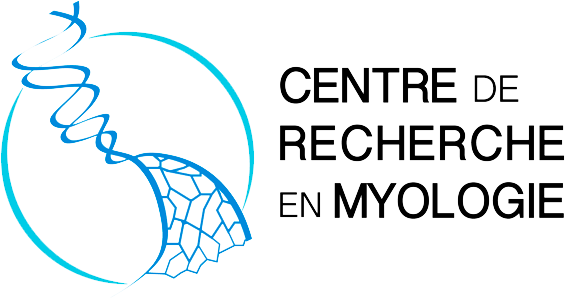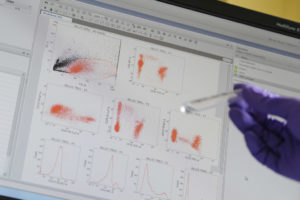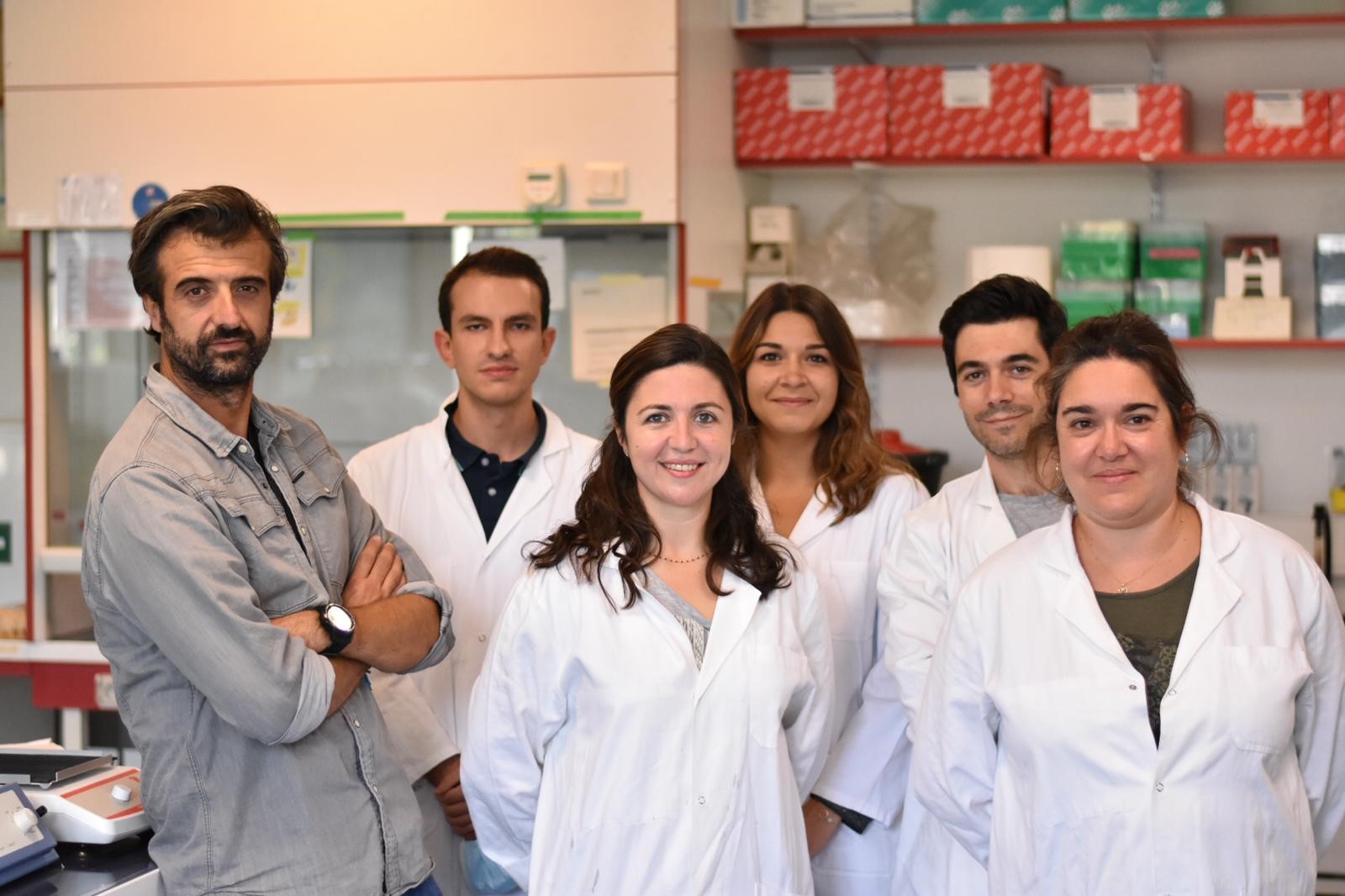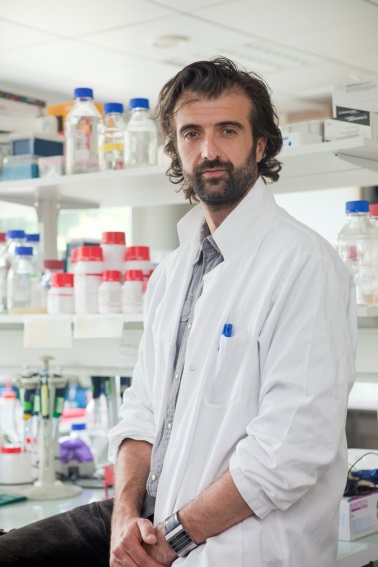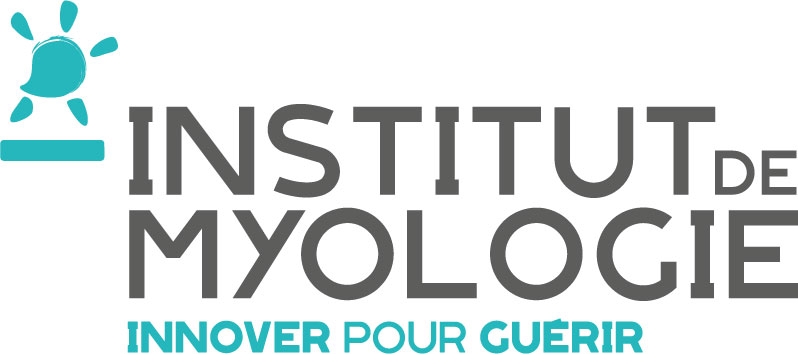Signal pathways and striated muscles
Striated muscles account for about 40% of total body weight, contain 50-75% of the body’s total protein and contribute significantly to multiple body functions. There are two types of striated muscle: skeletal and cardiac muscles. They share a common architecture characterized by a very particular and well described arrangement of muscle cells and associated connective tissues.
Muscular dystrophies correspond to a family of muscle diseases characterized by weakness and progressive muscle degeneration. At the skeletal muscular level, they manifest themselves by a decrease in muscle strength (muscular dystrophy), and a lack of mobilité́ joints (muscle retractions) that begin in childhood or in young adults. The decrease in muscle strength leads, in a few cases, to a loss of independent walking, making it necessary to use a power wheelchair to get around. These are diseases of genetic origin. There are several forms that differ in the age of onset of symptoms, the nature of the muscles affected and their severity. At the cardiac level, the presence of abnormalities is observed at a more or less advanced age, mainly in the form of dilated cardiomyopathy, which is the main cause of death and makes the severity of these diseases. At present, there is no curative treatment available.
Our group is particularly interested in studying the molecular and cellular mechanisms involved in two muscular dystrophies: Duchenne muscular dystrophy and Emery-Dreifuss muscular dystrophy. It appears important and necessary to increase our knowledge of the pathophysiology of muscular dystrophies and cardiomyopathies in order to unveil the cellular/molecular mechanisms that will allow us to target future therapeutic approaches. We are studying in vitro and in vivo models of these pathologies and developing novel pharmacological therapies based on our discoveries.
Our research is based on 3 axes:
- Tissue organization of striated muscles in health and pathology
- Signalling pathways regulating the links between structure and function in striated muscles
- Control of striated muscle gene expression through signalling pathways
| Name | Position | ORCID |
|---|
- Nicolas Vignier. The non-muscle ADF/cofilin-1 controls sarcomeric actin filament integrity and force production in striated muscle laminopathies. Journée de la societe française de Myologie, Nov 2021, Saint Etienne (FR), France. ⟨hal-04012882⟩
- Christel Gentil, Lucile Saillard, Amélie Vergnol, Lorenzo Giordani, Bruno Cadot, et al.. GDF5 therapeutic potential for DMD. SFM 2021, Nov 2021, St Etienne, France. ⟨hal-03994315⟩
- Nicolas Vignier. The non-muscle ADF/cofilin-1 controls sarcomeric actin filament integrity and force production in striated muscle laminopathies. 18th IIM Meeting, Oct 2021, Distanciel zoom, Italy. ⟨hal-04012868⟩
- Nicolas Vignier, Maria Chatzifrangkeskou, Luca Pinton, Hugo Wioland, Thibaut Marais, et al.. The non-muscle ADF/cofilin-1 controls sarcomeric actin filament integrity and force production in striated muscle laminopathies. Cell Reports, 2021, 36 (8), pp.109601. ⟨10.1016/j.celrep.2021.109601⟩. ⟨hal-03350074⟩
- Mohammad Haroon, Jenneke Klein-Nulend, Astrid D Bakker, Jianfeng Jin, Hadi Seddiqi, et al.. Myofiber stretch induces tensile and shear deformation of muscle stem cells in their native niche. Biophysical Journal, 2021, 120 (13), pp.2665 - 2678. ⟨10.1016/j.bpj.2021.05.021⟩. ⟨hal-03296015⟩
- Nicolas Rose. New ex vivo models to study the mechanical interplay between muscle cells and their microenvironment. Biological Physics [physics.bio-ph]. Sorbonne Université, 2021. English. ⟨NNT : 2021SORUS440⟩. ⟨tel-03722378⟩
- Daisy Proietti, Lorenzo Giordani, Marco de Bardi, Chiara d'Ercole, Biliana Lozanoska-Ochser, et al.. Activation of skeletal muscle-resident glial cells upon nerve injury. JCI Insight, 2021, ⟨10.1172/jci.insight.143469⟩. ⟨hal-03160815⟩
- Anne-Claire Guenantin, Imen Jebeniani, Julia Leschik, Erwan Watrin, Gisèle Bonne, et al.. Targeting the histone demethylase LSD1 prevents cardiomyopathy in a mouse model of laminopathy. Journal of Clinical Investigation, 2021, 131 (1), ⟨10.1172/JCI136488⟩. ⟨hal-03134235⟩
- Haikel Dridi, Wei Wu, Steven Reiken, Rachel Ofer, Yang Liu, et al.. Ryanodine receptor remodeling in cardiomyopathy and muscular dystrophy caused by lamin A/C gene mutation. Human Molecular Genetics, 2020, 29 (24), pp.3919-3934. ⟨10.1093/hmg/ddaa278⟩. ⟨hal-03859366⟩
- Inès Barthélémy, Nadège Calmels, Robert B Weiss, Laurent Tiret, Adeline Vulin, et al.. X-linked muscular dystrophy in a Labrador Retriever strain: phenotypic and molecular characterisation. Skeletal Muscle, 2020, 10 (1), pp.23. ⟨10.1186/s13395-020-00239-0⟩. ⟨hal-02934725⟩
